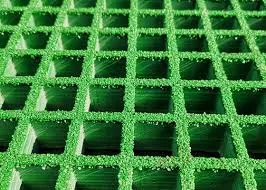
-
 Afrikaans
Afrikaans -
 Albanian
Albanian -
 Amharic
Amharic -
 Arabic
Arabic -
 Armenian
Armenian -
 Azerbaijani
Azerbaijani -
 Basque
Basque -
 Belarusian
Belarusian -
 Bengali
Bengali -
 Bosnian
Bosnian -
 Bulgarian
Bulgarian -
 Catalan
Catalan -
 Cebuano
Cebuano -
 China
China -
 China (Taiwan)
China (Taiwan) -
 Corsican
Corsican -
 Croatian
Croatian -
 Czech
Czech -
 Danish
Danish -
 Dutch
Dutch -
 English
English -
 Esperanto
Esperanto -
 Estonian
Estonian -
 Finnish
Finnish -
 French
French -
 Frisian
Frisian -
 Galician
Galician -
 Georgian
Georgian -
 German
German -
 Greek
Greek -
 Gujarati
Gujarati -
 Haitian Creole
Haitian Creole -
 hausa
hausa -
 hawaiian
hawaiian -
 Hebrew
Hebrew -
 Hindi
Hindi -
 Miao
Miao -
 Hungarian
Hungarian -
 Icelandic
Icelandic -
 igbo
igbo -
 Indonesian
Indonesian -
 irish
irish -
 Italian
Italian -
 Japanese
Japanese -
 Javanese
Javanese -
 Kannada
Kannada -
 kazakh
kazakh -
 Khmer
Khmer -
 Rwandese
Rwandese -
 Korean
Korean -
 Kurdish
Kurdish -
 Kyrgyz
Kyrgyz -
 Lao
Lao -
 Latin
Latin -
 Latvian
Latvian -
 Lithuanian
Lithuanian -
 Luxembourgish
Luxembourgish -
 Macedonian
Macedonian -
 Malgashi
Malgashi -
 Malay
Malay -
 Malayalam
Malayalam -
 Maltese
Maltese -
 Maori
Maori -
 Marathi
Marathi -
 Mongolian
Mongolian -
 Myanmar
Myanmar -
 Nepali
Nepali -
 Norwegian
Norwegian -
 Norwegian
Norwegian -
 Occitan
Occitan -
 Pashto
Pashto -
 Persian
Persian -
 Polish
Polish -
 Portuguese
Portuguese -
 Punjabi
Punjabi -
 Romanian
Romanian -
 Russian
Russian -
 Samoan
Samoan -
 Scottish Gaelic
Scottish Gaelic -
 Serbian
Serbian -
 Sesotho
Sesotho -
 Shona
Shona -
 Sindhi
Sindhi -
 Sinhala
Sinhala -
 Slovak
Slovak -
 Slovenian
Slovenian -
 Somali
Somali -
 Spanish
Spanish -
 Sundanese
Sundanese -
 Swahili
Swahili -
 Swedish
Swedish -
 Tagalog
Tagalog -
 Tajik
Tajik -
 Tamil
Tamil -
 Tatar
Tatar -
 Telugu
Telugu -
 Thai
Thai -
 Turkish
Turkish -
 Turkmen
Turkmen -
 Ukrainian
Ukrainian -
 Urdu
Urdu -
 Uighur
Uighur -
 Uzbek
Uzbek -
 Vietnamese
Vietnamese -
 Welsh
Welsh -
 Bantu
Bantu -
 Yiddish
Yiddish -
 Yoruba
Yoruba -
 Zulu
Zulu
fiberglass damper
Fiberglass Dampers The Unsung Heroes of Noise Control
In today's fast-paced, urbanized world, noise pollution has become a pervasive issue that affects the well-being of millions. From the incessant hum of traffic to the clamor of construction sites, excessive noise can lead to a range of health issues, including stress, sleep disturbances, and even cardiovascular problems. To combat this growing concern, innovative technologies have emerged, and one such solution that has gained prominence is the fiberglass damper.
A fiberglass damper is a specialized device designed to control and reduce noise levels in various environments. Its primary function is to absorb sound waves and minimize the transmission of noise from one area to another. This is particularly beneficial in settings such as industrial facilities, commercial buildings, and even residential properties where noise control is essential for comfort and productivity.
The composition of fiberglass dampers plays a pivotal role in their effectiveness. Made from fiberglass, a composite material known for its lightweight and durable properties, these dampers are not only effective in sound absorption but are also resistant to weather, corrosion, and fire. This durability makes them an ideal choice for both indoor and outdoor applications. Furthermore, their design can be tailored to fit specific needs, whether in terms of size, shape, or sound absorption capabilities.
One of the key advantages of fiberglass dampers is their versatility. They can be installed in a variety of settings, including HVAC systems, where they help reduce noise generated by air movement. In commercial buildings, these dampers can be integrated into walls or ceilings to mitigate sound transfer between offices or meeting rooms. In industrial environments, they can be used to minimize noise from machinery, thus creating a safer and more comfortable work atmosphere for employees.
fiberglass damper

In addition to their noise-reducing capabilities, fiberglass dampers also provide aesthetic benefits. They can be manufactured in various colors and finishes, allowing them to blend seamlessly into the surrounding environment. This adaptability makes them an attractive option for architects and designers who prioritize both functionality and visual appeal.
Moreover, the installation of fiberglass dampers can lead to significant energy savings. By reducing noise levels, they can enhance the overall efficiency of HVAC systems, allowing them to operate more effectively. This not only cuts down on energy consumption but also contributes to a more sustainable approach to building design.
As concerns about noise pollution continue to grow, the demand for effective solutions like fiberglass dampers is likely to increase. Their ability to combat noise while providing durability and aesthetic value makes them a smart choice for a wide range of applications. Whether in a bustling office building or a serene residential setting, fiberglass dampers serve as unsung heroes in the quest for quieter, more comfortable environments.
In conclusion, fiberglass dampers represent a pivotal advancement in noise control technology. With their unique properties and versatile applications, they are well-positioned to play an essential role in tackling the challenges posed by noise pollution. As awareness of the implications of excessive noise continues to rise, incorporating such innovative solutions will be crucial in fostering healthier and more pleasant living and working conditions.
Latest news
-
Exploring the Benefits of Top Hammer Drifter Rods for Enhanced Drilling PerformanceNewsJun.10,2025
-
High-Precision Fiberglass Winding Machine for GRP/FRP Pipe Production – Reliable & Efficient SolutionsNewsJun.10,2025
-
FRP Pipes & Fittings for Shipbuilding - Corrosion-Resistant & LightweightNewsJun.09,2025
-
Premium FRP Flooring Solutions Durable & Slip-ResistantNewsJun.09,2025
-
Premium Fiberglass Rectangular Tanks Durable & Lightweight SolutionNewsJun.09,2025
-
Tapered Drill String Design Guide Durable Performance & UsesNewsJun.09,2025









